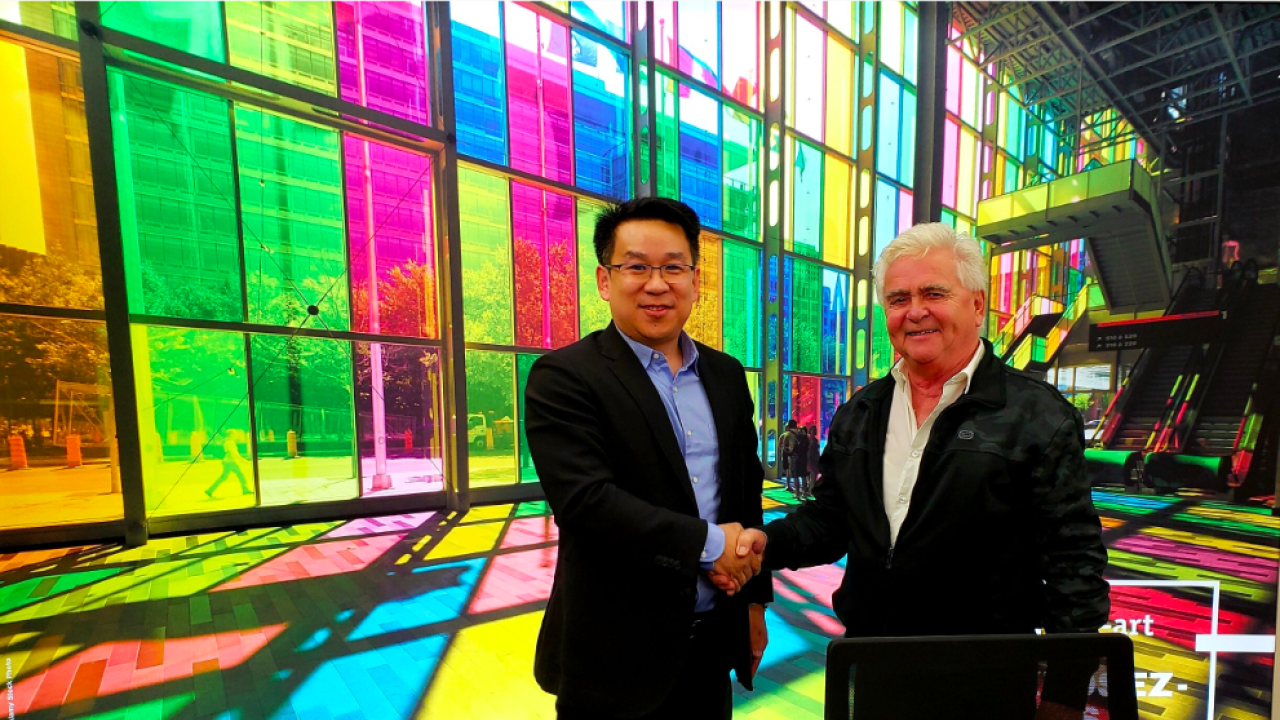Great Printing innovates in China

The company was established in 2003 in the heart of the Teda-Tianjin economic-technological development area. It and is principally engaged in commercial label printing and application, but is also a franchise operation of the Tianjin Municipality, for which it prints barcode labels for the region’s postal and other services.
Since its establishment in 2003, Great Printing has moved plant three times as its business has grown. In 2017, the company set up a new packaging technology company in Shanghai and founded the FlyBear printing company in North America. Now it has started on a new project for the south China market.
The converter’s key customers are mainly small and medium-sized enterprises with premium quality demands, and mainly focused in the pharmaceutical and food fields. Notbable customers include Master Kong, MOTO, Samsung, Kraft, Nestle, Honeywell, Continental Automotive, Otis Elevator, John Diehl, Fuji Xerox, FAW Toyota, Boeing, Caterpillar, Dawn Computer, Bestore and Tianjin CIMC North Ocean Container (TNOC).
Great Printing is a council member of the Chinese printing association PEIAC and sits on the vice council of the Label & Special Printing Branch of PTAC. In these capacities it is both a sponsor and participant in drafting national standards for the Chinese printing industry.
Keep innovating
Great Printing’s work has already been recognized on the world stage. Its Nestlé Ice Cream freezer labels obtained an Honorable Mention in the 2016 World Label Awards for offset labels, and a wine label led to another prize in the 2018 World Label Awards wine/spirits category.
‘In terms of company scale, we are still an SME,’ says Liu Haifeng. ‘But we are walking at the forefront of innovation. For example, we took the lead in adopting ERP and MIS management systems, installing the first Sino-MV beta testing system. We have also pioneered UV LED drying systems, passed the G7 and GMI color management tests and obtained Environment Protection accreditation.’ The company has also obtained dozens of post-press patents.
Liu Haifeng is an enthusiastic advocate of digital printing technology, pointing out that all the leading digital press suppliers, such as HP, Konica Minolta and Screen, have established professional demo and technical centers in China, which allow a full range of test services to be offered to speed the introduction of digital presses into Chinese print houses.
Great Printing also emphasizes innovation outside of manufacturing. Liu Haifeng explains: ‘We define ourselves as a comprehensive label service supplier. In my personal view, as automation technology advances, our dependency on labor during label production will lessen, and service innovation will become the key point of future competitiveness.’
In Liu Haifeng’s opinion, the integrated solutions model launched by RR Donnelley is something from which label converters can learn. The new company created in Shanghai by Great Printing follows this same management concept.
During the 2018 China Printing Innovation Conference, Liu Xiaokai, the printing and distribution division Chief of State Administration of Press, Publication, Radio, Film and Television of PR China, expressed his opinion that company leaders need to focus on employee growth as well as on wider social responsibilities.
As the founder and general manager of Great Printing, Liu Haifeng understands the requirements of corporate responsibility and social mission. As well as actively taking part in forums and professional exhibitions, he has successfully completed an ‘on-the-job’ MBA course at the Beijing Institute of Graphic Communication.
Labelexpo reflections
Reflecting on his visit to Labelexpo Americas 2018, Liu Haifeng says: ‘Compared with developed North American label enterprises, we saw where we need to catch up, but also found where we have some advantages. In the past, we have looked up to these international companies, where now I feel more confident in our software, information management and technical innovation. The innovation experience accumulated by international corporations for years was well worth our learning and studying, but I believe our management systems have already caught up and might exceed most of North American enterprises in the next five years.’
Liu Haifeng also learned a lot from Labelexpo India 2018 about the rapidly developing Indian label market, and the fast-emerging label enterprises which increased in number to more than 4,000 from approximately 600 six years ago.
Years of industrial experience and plenty of field surveys at home and abroad make the current status of the Chinese label market – and potential issues during its further development – clear to Liu Haifeng.
For its future development, Great Printing has adopted the slogan ‘Growth by quality, differentiated by innovation’. Liu Haifeng has established a 5S management philosophy with the following elements: Soul (developing the passion of employees for quality control); Service and sales (which means service first and sales second); Save (to focus on saving both time and energy); Share (to communicate openly with team members and industrial partners); Slow (to slow the pace and focus on steady growth). An example of that final ‘S’ concerns intelligent manufacturing, where a company needs to transition to automation from semi-automation, from information collection to data management and finally to intelligence-driven development. That is, by necessity, a progressive procedure.
Liu Haifeng concludes: ‘China’s per capita label consumption is far below the world average level, and there are plenty of real difficulties we face – ever-more restrictive environment protection policies, the rising cost of raw materials and increasingly fierce competition. Therefore, in the context of slowing economic growth, changing patterns of production and industrial restructuring, China’s label converters need to grasp every possible opportunity, explore their internal potential and break through conventional ways of thinking to seek new forms of differentiated development. This means researching new products and even creating new demands. Only in this way can China label companies gain wider development space.’
At the same time as focusing on the company’s development, he does not forget to give back: the company has donated two presses to the China Printing Museum, which agreed to archive them as industrial history. Great Printing has also donated two presses to the Beijing Institute of Graphic Communication to sponsor the construction of a practical teaching base.
Stay up to date
Subscribe to the free Label News newsletter and receive the latest content every week. We'll never share your email address.


